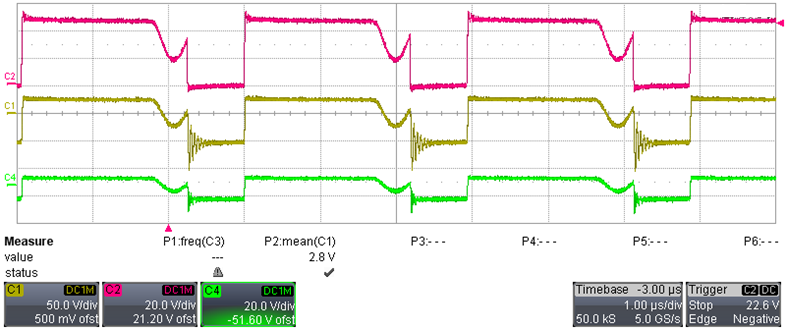TIDT336 may 2023
3.1.3 32-V Input Voltage

|
C1: D1 Anode (50 V / div) C2: SW (20 V / div) C4: D4 Anode (10 V / div) 1 µs / div |
Figure 3-3 Switching Waveforms at 32-V
Input Voltage